History of Barbara Gordon: Batgirl to Oracle and Everything In Between
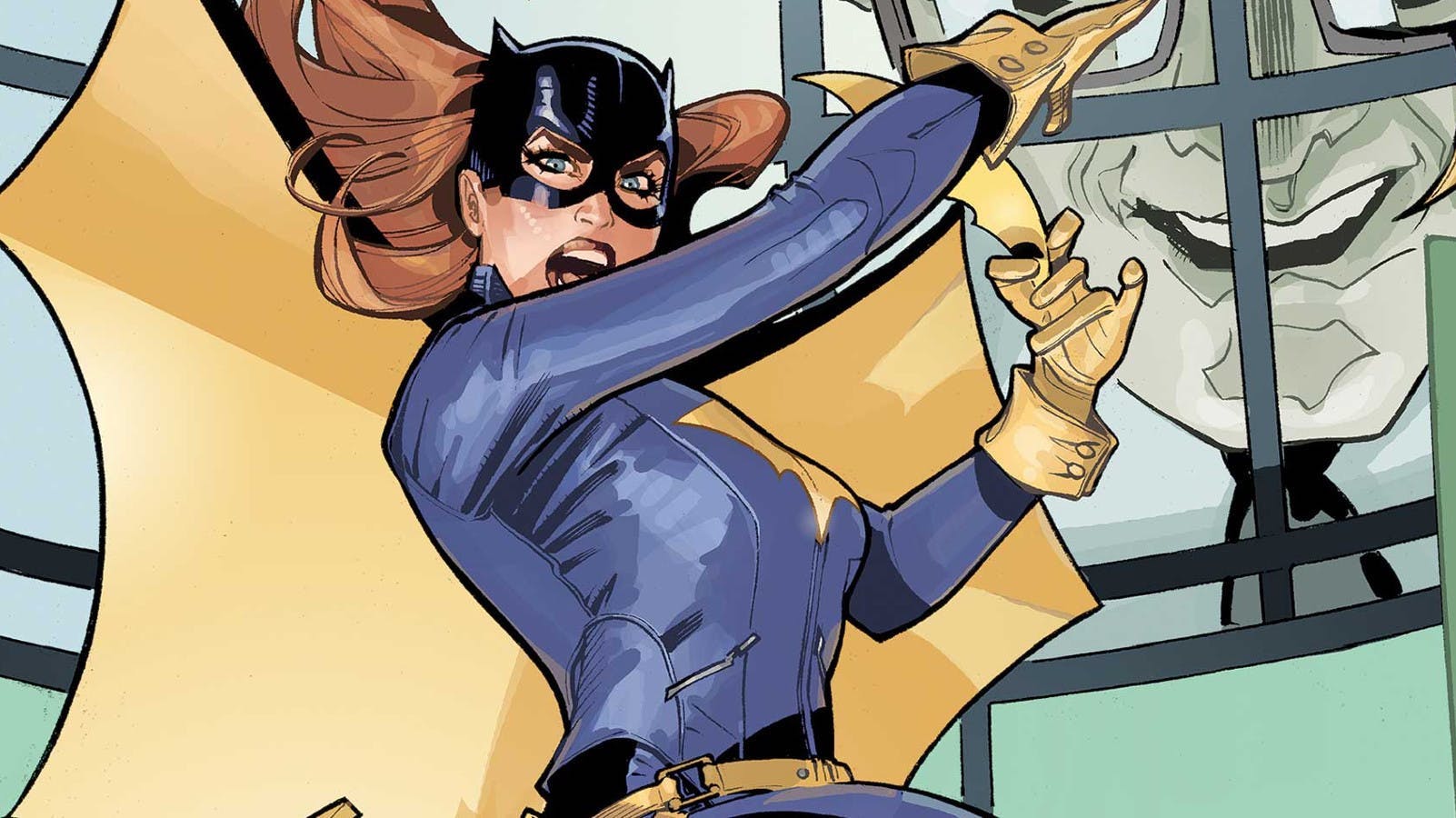
I’d argue that of all the characters that have come in and out of Batman’s life, very few have left the impression that Barbara Gordon has.
And honestly, I don’t think you’d disagree with me.
Not only has she been a part of the Bat-Family for the better part of 50 years, but she has also been subjected to some of the most drastic character changes that comic books have ever seen.
The history of Barbara Gordon is littered with tragedy, triumph, loss, violence, and sexuality. She has been at the center of one of the most talked about moments in history, transformed into someone completely different and then when a company-wide reset occurred, transformed once again. While many might say that she isn’t the best Batgirl ever created, I disagree.
Barbara is Batgirl. Not Cassandra Cain. Not Stephanie Brown. And not Helena Bertinelli. Barbara Gordon. There isn’t a single character in history who embodies the qualities of Batgirl like Barbara.
And here’s why.
Barbara is not a trained assassin or an expert in every known fighting style. She doesn’t drip with arrogance or cockiness, and she isn’t perfect. She’s Barbara Gordon. Nothing more, nothing less.
Barbara is human. She’s young, naive, impetuous, and unafraid to make a mistake. She doesn’t have a traditional superhero upbringing or more powers than is countable. And more than any of these, she’s believable. So believable that reading her makes you believe that you could be Batgirl.
The initial history of Barbara Gordon is fairly straightforward. When we first meet her she was nothing more than Batman’s sidekick. She did what he did. She jumped when he said jump. And she was great at doing it. The problem was that to evolve as a character meant that she had to evolve as a person and a crime fighter.
And for 50 years, evolve she did.
Today’s Barbara is strong, sophisticated, independent, ethical, morally straight, and capable of standing up to Gotham’s worst on any given day. She’s a role model for young girls and boys that any parent would be proud of.
However, before we dig anymore into the character…
Barbara Gordon first appeared in the pages of Detective Comics #359 back in January of 1967. She was created by William Dozier, Carmine Infantino, and Julius Schwartz.
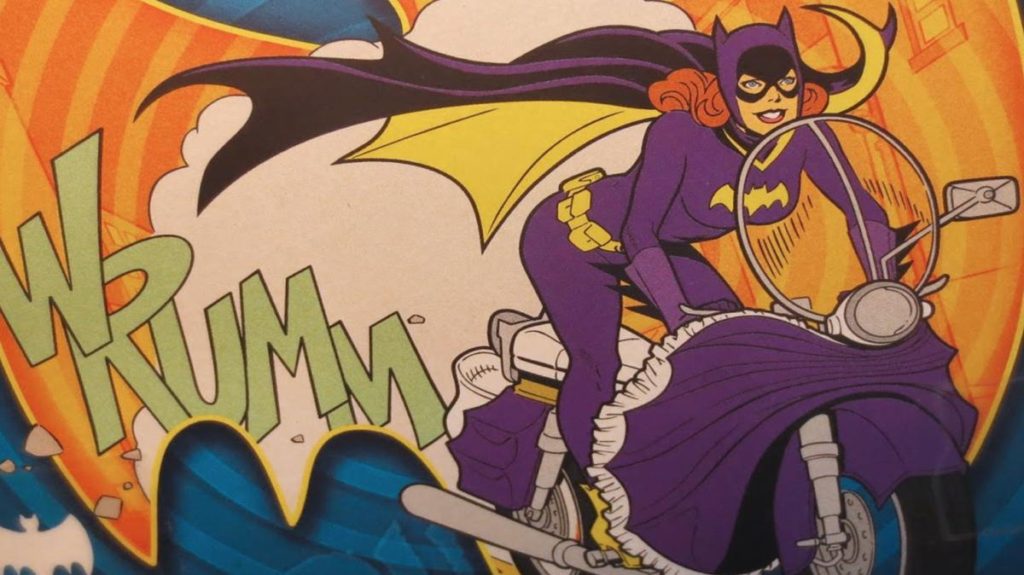
A little different than most comic book characters, Barbara Gordon/Batgirl was the by-product of the Adam West-led Television Show wanting a new female character to act as a counterpart to Batman. The request wasn’t limited to television, either. DC Editor, Julius Schwartz hoped that the television show could introduce the new character at the same time as the comic book. So, Batgirl was introduced during the third season of the show and in Detective Comics #359. On the show, Batgirl was portrayed by Yvonne Craig and her version set the standard for what Batgirl was to become.
Barbara Gordon is the daughter of Commissioner James Gordon and the sister of James Gordon Jr. She is gainfully employed as the head of the Gotham City Public Library and holds a Ph.D
In her first story, Barbara is on route to a costume ball dressed as a female version of Batman. Her costume, which included a black bodysuit, yellow gloves, a utility belt, cape, boots, cowl, and bat symbol, would remain unchanged for the next many years. The story sees Barbara successfully stop the villain Killer Moth from kidnapping Bruce Wayne. Although his rescue draws the attention of Batman, he does everything in his power to prevent her from becoming a crime fighter.
We all know how that turned out.
Batgirl instantly drew the attraction of Batman’s readers. Contrary to his business first, unable to take off the cape and cowl attitude, she was lighthearted and fun. Barbara offered a dynamic to both Batman and his stories not experienced since, well, ever. She was a hit and DC knew it. So, to capitalize on her popularity, DC put her everywhere.
- Comics
- Lunchkits
- Dolls
- Trading Cards
DC rode the character and her success for as long as they could. Then, when they thought they couldn’t get any
Or at least so we thought.
By the late 1980s, Batgirl had experienced a downturn in popularity. So, in an effort to drum up interest for the character, DC asked Barbara Kesel to force her into retirement. DC had hoped by having her retire, the interest of fans all around the world would perk up just enough for Batgirl to be cared about. In actuality and when asked about the real reason for her retirement, Kesel simply said, “It was pretty much this simple, [they said] She’s getting her spine blown out in The Killing Joke, so try to make people care.”
The issue titled “Batgirl Special” was received with mixed reviews. The reviews, however, weren’t important. What was important was the way it set up her future. The very last page of the Batgirl Special held an advertisement announcing DC’s next graphic novel … “The Killing Joke”.
Perhaps Alan Moore, most known for setting the standard in dark and gritty superheroes stories with The Watchmen, held a vendetta against Barbara? Perhaps he was annoyed with her? Or perhaps he just wanted to tell a gruesome story? Whatever the reason, he changed Barbara in a way that no mainstream character had ever been changed before…and he did it in just a few panels.
The book, while shedding light on the Joker’s origin, does so at the expense of a
The panel sees the retired Barbara sitting down and having a cup of cocoa with her father. Shortly after they begin, the doorbell rings and Barbara answers. After opening the door, she learns that the Joker awaits her on the other side. Before she can even blink, he shoots her in a section of her body just below the midsection. From there, he undresses her and takes pictures of her as she writhes in pain. Since it’s creation, the scene has gone down in infamy for all the right and wrong reasons.
And why?
Simple.
Here was Barbara Gordon, Batgirl, trained by the best, put in a position that most superheroes, especially male ones, would never find themselves in…defenceless and caught off guard. Worse yet, she was shot in the pelvic area…a place where a man would never dare be shot in comics, undressed and defiled. Barbara’s treatment was horrific, disgusting, and downright awful. In an instant, she was left a paraplegic and lost everything that was precious to her including the ability to create life.
And for what?
A mechanism to move a story along.
Barbara was a plot point and undeserving of being one. Barbara was inexplicably treated in a manner that no woman, comic book or not, should be treated. She was strong, independent, and deserved better. Unfortunately, DC and Alan Moore didn’t see it this way. She was used in a manner to make Batman better. She was shot, he wanted revenge.
Even Alan Moore regrets what he did to Barbara citing it to be overtly violent. Of it he said this, “I asked DC if they had any problem with me crippling Barbara Gordon—who was Batgirl at the time—and if I remember, I spoke to Len Wein, who was our editor on the project … [He] said, ‘Yeah, okay, cripple the bitch.’ It was probably one of the areas where they should’ve reined me in, but they didn’t.”
As horrendous as The Killing Joke was and as the past has shown, it also turned out to be a blessing in disguise.
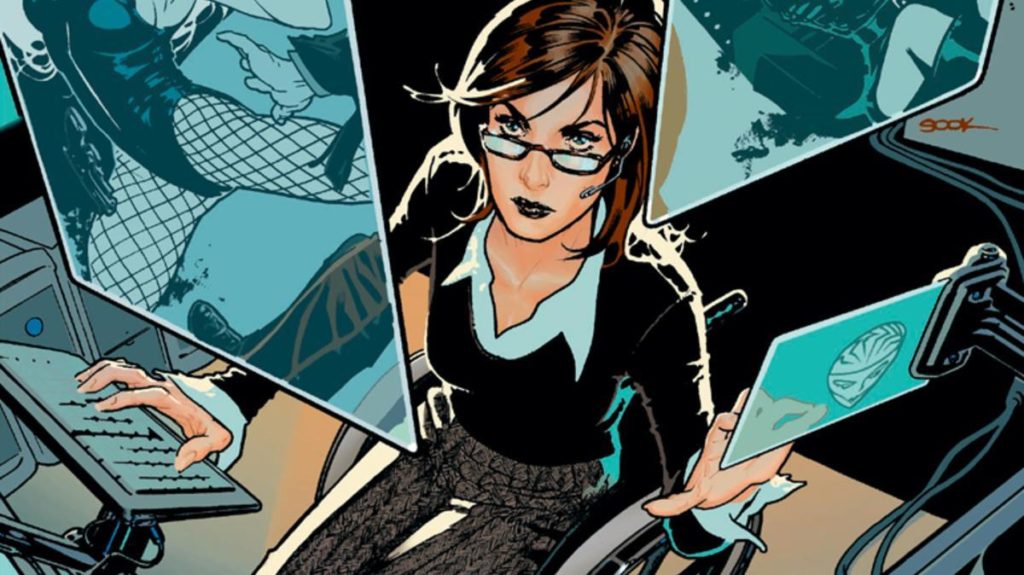
The Killing Joke forced Barbara to become more than anyone ever thought she’d become. As a paraplegic Barbara had two options. She could either A) wallow in pity or B) do something about it.
Thankfully she chose B.
On the brilliance of Kim Yale and John Ostrander, the history of Barbara Gordon took a 180-degree turn. The Killing Joke left Barbara as a paraplegic. Yale and Ostrander didn’t see it as a crutch. They saw her as a capable crimefighter who was able to overcome any sort of adversity. So, instead of relegating her to bedrest, they gave her as many computers as possible and turned her into Oracle. As Oracle, rather than being able to fight one crime at a time, she could fight an unlimited amount of crimes. This meant that she became the eyes and research station for nearly every hero in DC.
Oracle forced Barbara to rely on something other than her hands and feet….her brain. She suddenly began to tap into her expansive knowledge o
And it wasn’t just that.
Through Oracle, DC was able to reach and empower a huge yet untapped segment of the comic book market…people with disabilities. Barbara was disabled and rather than feeding “the unable to do anything because you’re disabled” stereotype Barbara proved that success is a mindset. She singlehandedly changed the way that disabled people are perceived.
This doesn’t mean that Barbara didn’t go through a period of self-doubt. It’s quite the opposite. During her first few appearances as Oracle, Barbara was drawn in a way that feeds the disabled stereotype. She was larger than she was as Batgirl, walked around with a “poor me” attitude and was unwilling to accept what had happened to her. And I quote, “I can’t ever walk again, or have kids, or probably ever marry…”
However, in what would become a defining trait of the character, Barbara showed her resilience. Within a few issues, she picked herself up and began to come into her own.
If there was ever a moment in the history of Barbara Gordon that could lay claim to her turnaround, it was the incredible Birds of Prey run. The series ran from 1996 until 2011, spanning just north of 150 issues. Birds of Prey really emphasized everything that Barbara was … a brilliant, thoughtful, and funny tactician/hacker/leader/friend/role model. Understand that this doesn’t mean she was perfect. She was far from it. What is does mean is that she was like you and
Creator Beau Yarbrough said this of it, “Barbara Gordon’s transformation from Batgirl to Oracle was
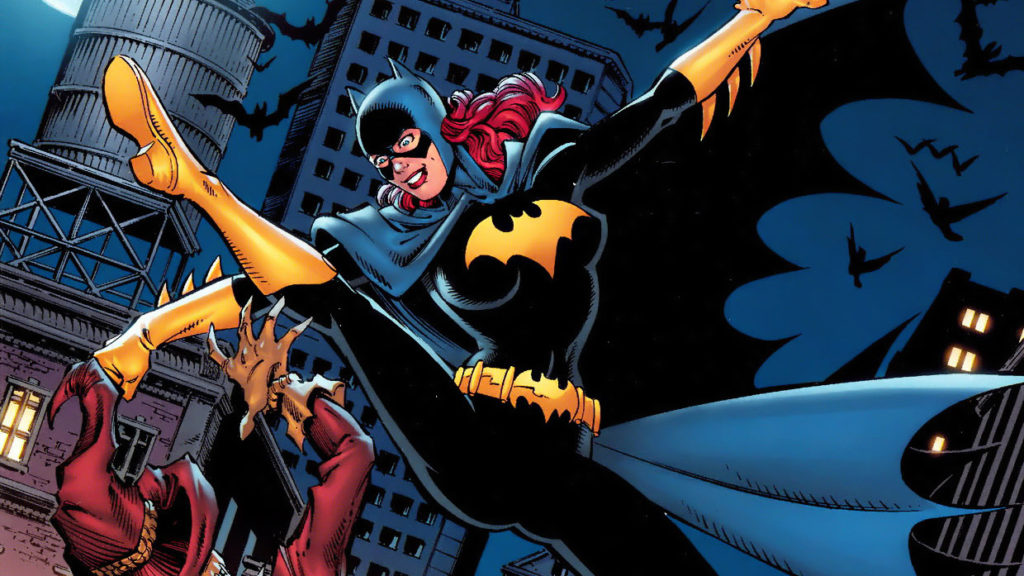
What makes the run so incredible is that Barbara continued to show why she was important to so many around the world. She, unlike most comic book heroes after a
And that’s not all.
Barbara was extensively trained before and after she met Batman, and continued to train after the shooting. Therefore, she could hold her own against anyone … and she did. It was never Barbara that tasted defeat. It was whoever was stupid enough to challenge her. Even the Joker, the same man who sent her to a life confined to a chair, couldn’t break her spirit. In one of the most emotionally charged panels in the history of comics, he proclaims that he took her legs from her. Yet in five simple words, she sets him straight. “You took nothing from me.”
“You took nothing from me.”
With five simple words Barbara proved that a disability is only what’s made of it.
When DC relaunched their universe in the much-maligned New 52 their idea was to create a starting point that any fan could jump on from. They understood that the world in which they’d spent the better part of a century creating, had gotten too convoluted and messy. So, in simplistic terms, the New 52 was a company-wide reset.
The New 52 launched with only 52 titles. With the launch of the titles came new costumes, origins and, character portrayals. Some were loved and others were hated. Of all the hated ones, none stirred up issues like Batgirl.
When the history of Barbara Gordon was recreated, gone was the Oracle character that defined her for 23 years and in Oracle’s place stood Batgirl. It’s important that you note that I used the word ‘stood’. Yes, Barbara Gordon, after 23 years was able to walk again.
Barbara’s reset was met with a bizarre combination of backlash and approval. People who loved Batgirl and all that she stood for were happy to see her back in the cape and cowl. People who loved Oracle and all that she stood for, were angered that she was gone. They had a good reason for being so. They screamed that DC had abandoned everything they had accomplished in making her the highest profile character to ever have been disabled, able.
Forums and websites became littered with people weighing in on her miracle.
“My dad was a paraplegic … Oracle meant so much. People read her comics and related or looked up to her whether they had disabilities or not. She eased the stigma and gave people like my dad and I representation. She made me hope for a day when discussions like this would be unnecessary because disabled people could be seen as individuals, not monsters.”
“THIS disabled person is happy to see Babs healed because I never will be.”
To make sure that Barbara’s time as Oracle wasn’t completely wiped from continuity, writer Gail Simone addressed it in the relaunched title. The new history of Barbara Gordon stated that she had been Batgirl for about a year before she was shot. After being shot, she was confined to a wheelchair for three years before learning about and visiting a clinic in South Africa that restored her mobility.
While Simone didn’t want her Batgirl to be defined by her past, she also didn’t want to completely ignore it. So…even though Batgirl had been miraculously cured, her paralysis and the stress that accompanied the shooting remained an integral part of the character for a long time. Even Post Traumatic Stress Disorder (PTSD) became a subject discussed in Batgirl.
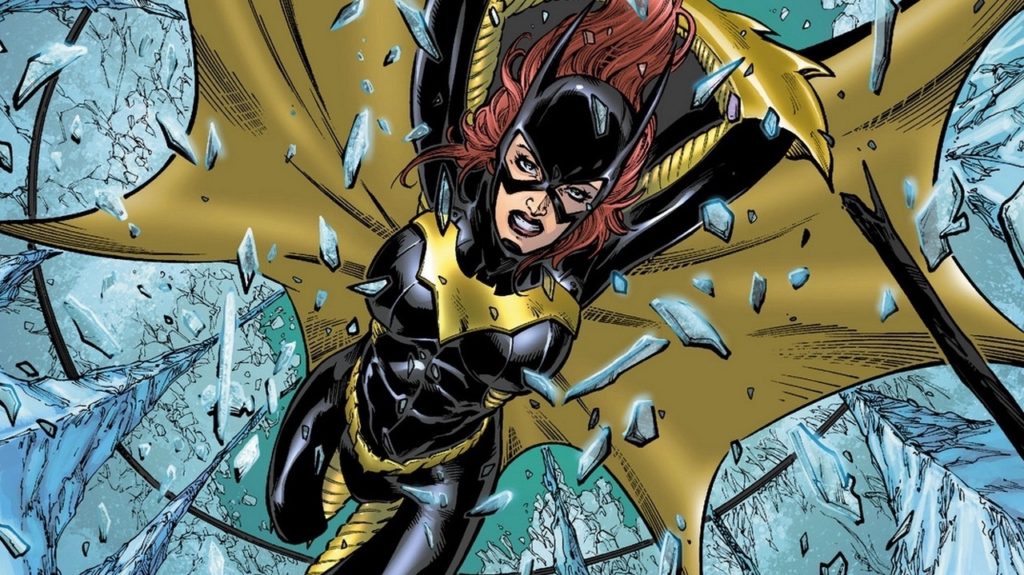
The new Batgirl was different from Oracle. Unlike Oracle who embraced help, Batgirl pushed it away. Fair or not, she worried that help was only offered out of pity and sympathy. She couldn’t believe that people would help because they simply wanted to. In no place was this truer than in the case of her longtime l
Yes, Dick Grayson. The same one who parades around as Nightwing.
But Barbara and Dick’s story is for another time…
This history of Barbara Gordon is filled with more twists and turns than any character should have to go through. Through it all, however, one thing had
And you know what?
DC and comic books as a whole are better for it.
As I always do with these in
So, may they be around forever.
Cheers,
Joel

